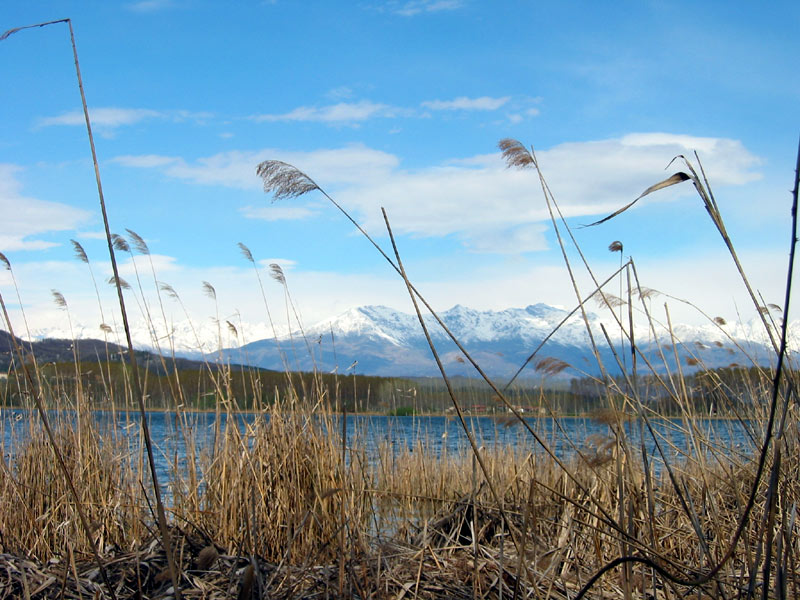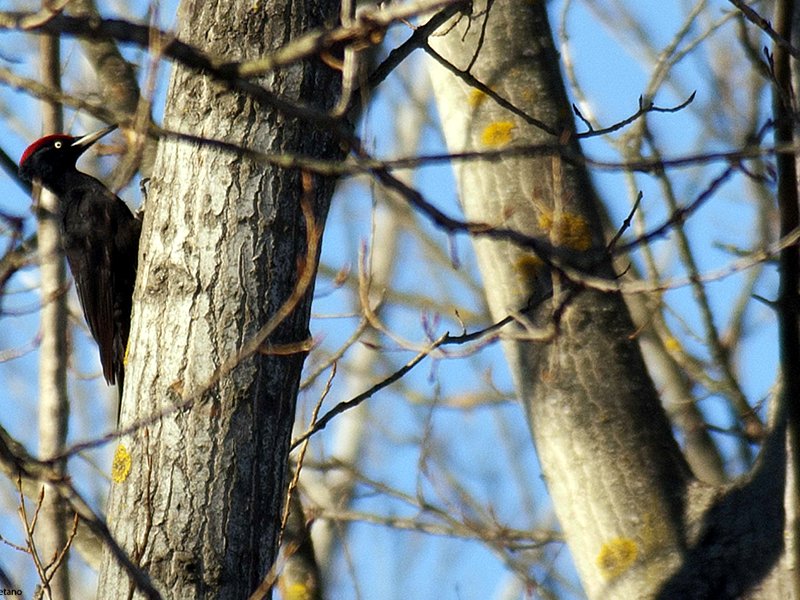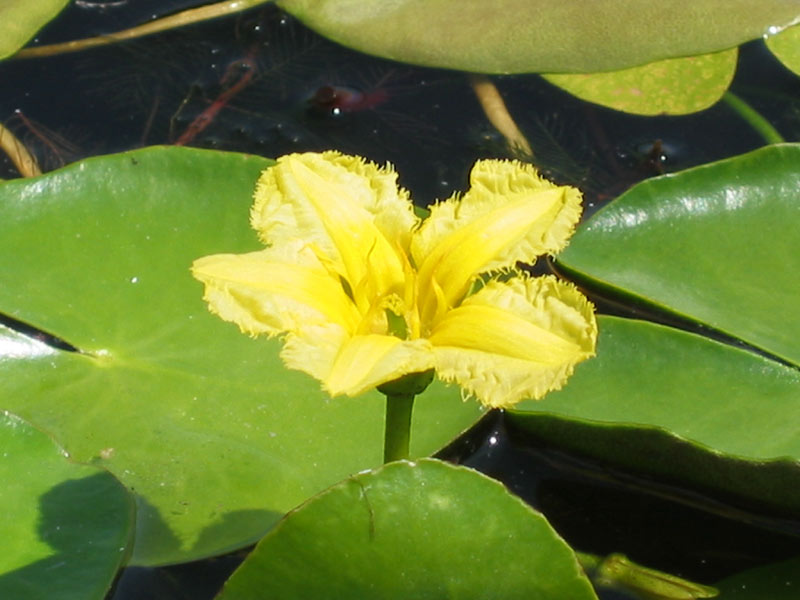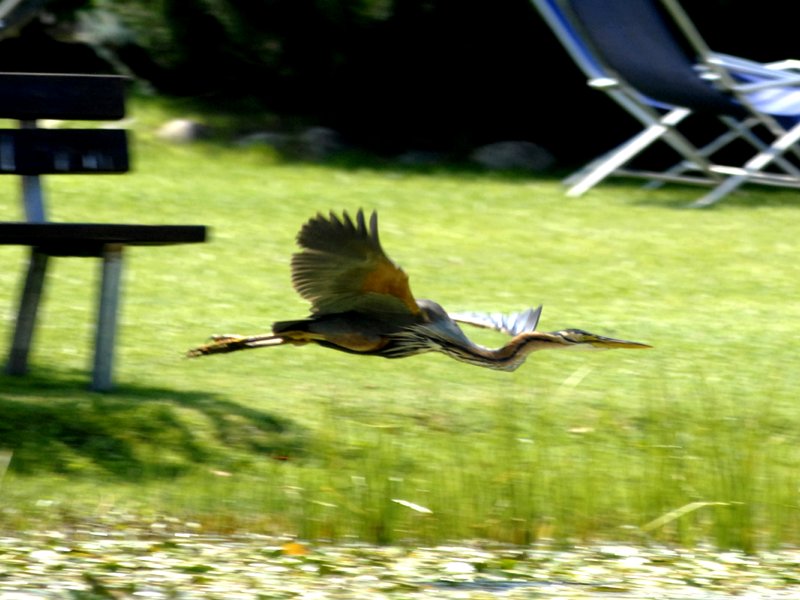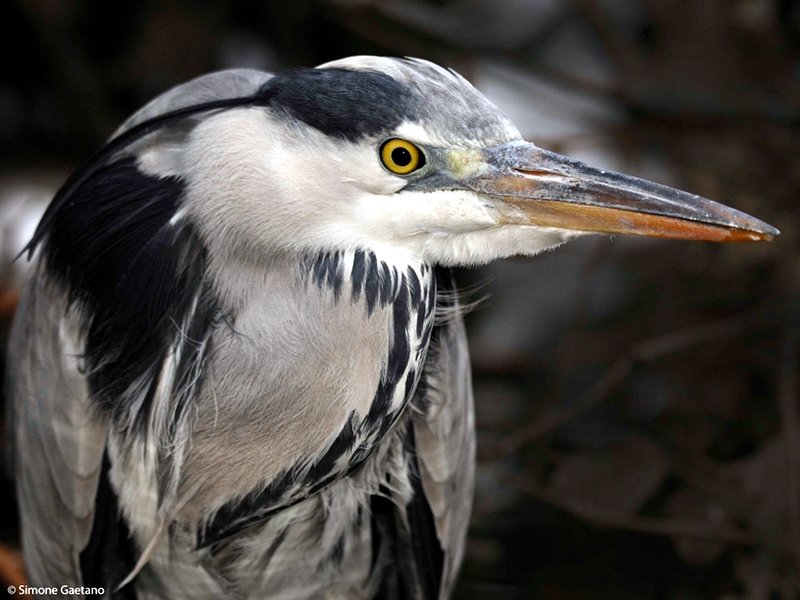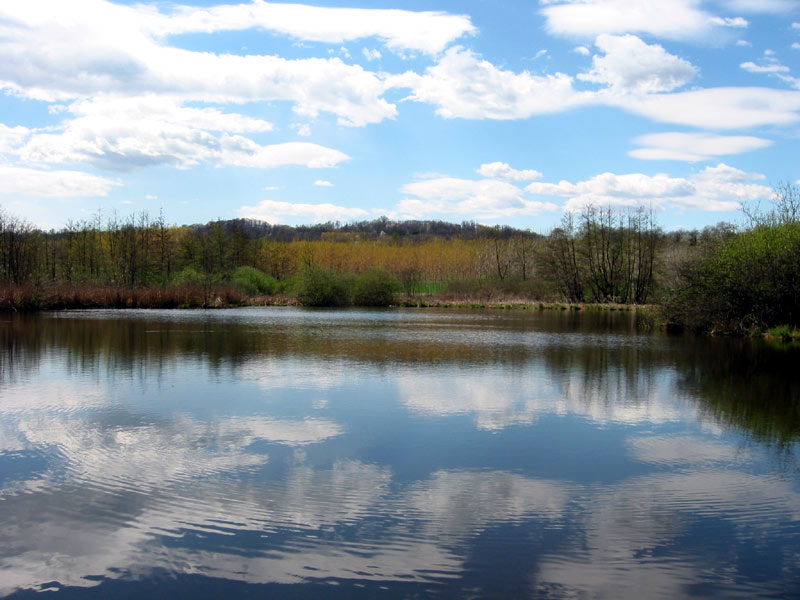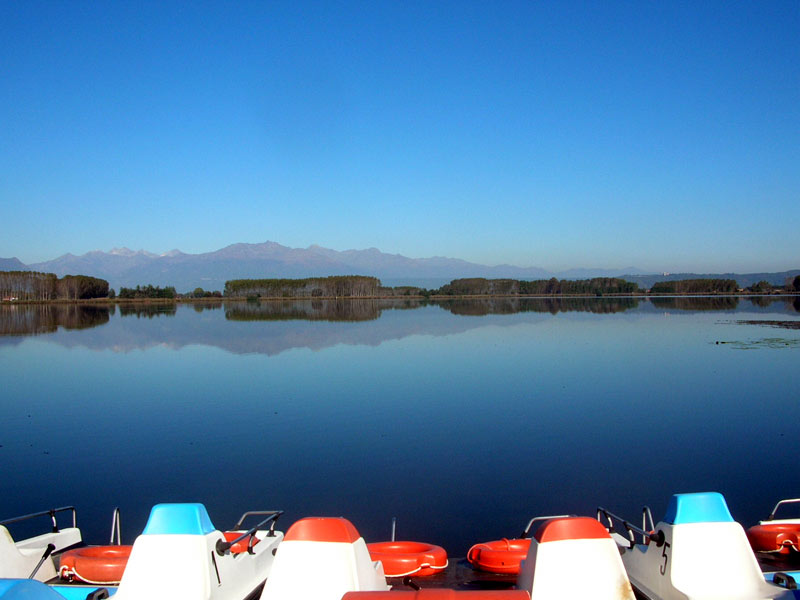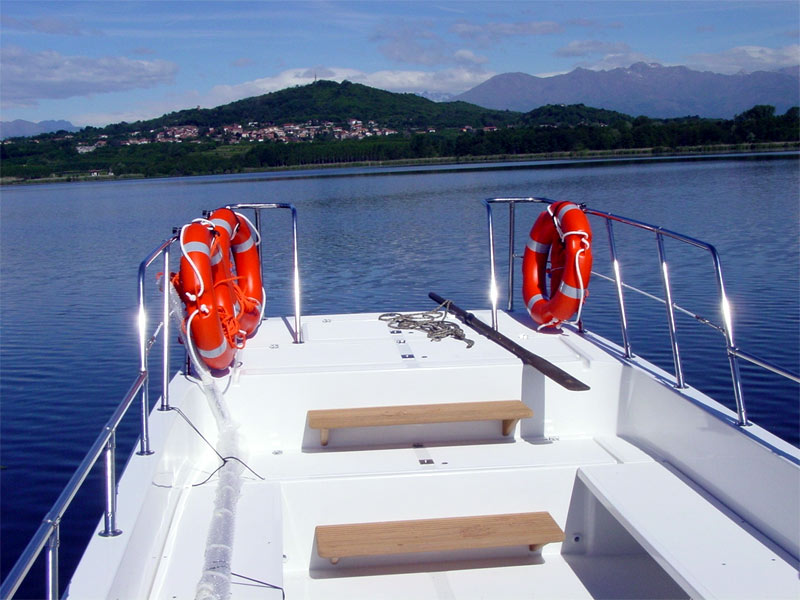Parco Naturale del Lago di Candia
www.provincia.torino.gov.itProtected Area
Identity Card
- Land Surface Area: 335.43 ha
- Lower altitude (m): 230
- Regions: Piemonte
- Provinces: Torino
- Municipalities: Candia Canavese, Mazzè, Vische
- Establishment Measures: LR 19 29/06/2009
- PA Official List: EUAP1059
- Park Authority: Città Metropolitana di Torino
Candia Lake is one the most important wetlands in Piedmont, since it houses a great number of aquatic birds together with a rich hydrophilous flora including some rare species. For this reason, the Park has been inserted in the list of the biotopes of Regione Piemonte. Furthermore, the Park has been declared a Site of Community Importance according to the European Union "Habitat" directive. Candia Lake will also soon be included in the list of the Protected Wetlands, according to what established by the Ramsar Convention.
The Origins and Features of the Lake
About 1,700,000 years ago, during the Pleistocene geological period,
the climate of our planet became colder: the sea level fell of several
meters, also because of alpine orogenesis, and the mountain valleys
were invaded by huge glaciers. One of these glaciers entirely covered
Valle d'Aosta and extended for dozens of kilometers also in the
Piedmont plain. The erosive action carried out by the glacier in its
movement towards the south accumulated great quantities of detritus
along its front and lateral edges and dug several depressions in the
plain.
When the temperature of the planet rose again, the glacier
slowly withdrew towards the north and left the basins of Candia and
Viverone lakes, as well as of several stretches of water in the
Canavese area, surrounded by the hills we call today Ivrea morainic
amphitheater.
Currently, Candia Lake lies at about 226 meters above sea level, covers an area of 1.52 sq.km
and has a perimeter of 5.5 km. Its average depth is 4.7 meters, the
maximum one is 7.7 meters. The lake does not receive water from
tributary watercourses, but from some underground springs situated
along its southern shore: for this reason the change of water is slow,
and takes about 6-7 years.
Flora
The flora in the Park is represented by 425 species, half of them
strictly linked to lake and marsh environments. Walking along the
shores of the lake you will have the opportunity to observe blooms of
different colors: white water lilies (Nymphaea alba) and yellow water lilies (Nuphar luteum), together with yellow floating hearts (Nymphoides peltata, see photo), catching the eye on the green background of the water chestnut (Trapa natans),
which is subject to management measures aimed at reducing its diffusion
and at limiting the supply of nutritional elements to the lake.
When you enter the Paluetta area, you can sight, among the tufted sedge (Carex elata) and the pale yellow iris (Iris pseudacorus), some rare species like the buckbean (Menyanthes trifoliata), the bladderwort (Utricularia vulgaris), the marsh cinquefoil (Comarum palustre), and the water violet (Hottonia palustris).
Avifauna
As far as wildlife is concerned, the avifauna play a leading role:
Candia lake is an important rest area both for wintering birds and
birds of passage. There are several historical mentions related to the
presence of occasional species like the great white pelican (Pelecanus onocrotalus), the white-headed duck (Oxyura leucocephala), the common scoter (Melanitta nigra), the merlin (Falco columbarius), the black-tailed godwit (Limosa limosa) and the bar-tailed godwit (Limosa lapponica), the wood sandpiper (Tringa glareola), and many others.
The
presence of two bird ringing stations in the Park - one of them active
since 1998 - has allowed experts to study bird species linked to water
and to the shore canebrake: among the species of great naturalistic
value - since they are rare on the regional and national territory - we
can mention the great white egret (Egretta alba) and the purple heron (Ardea purpurea), the bittern (Botaurus stellaris) and the little bittern (Ixobrychus minutus), the tufted duck (Aythya fuligula), the pochard (Aythya ferina), the northern pintail (Anas acuta), the gadwall (Anas strepera), the northern shoveler (Anas clipeata), the marsh warbler (Acrocephalus palustris), and the reed bunting (Emberiza schoeniclus).
The
data regarding the ornithological research activities that have been
carried out (about 15,000 specimens have been ringed) have been
gathered in the publication "L'avifauna del Parco naturale provinciale
del Lago di Candia - un lago sulla rotta sud-occidentale" by L. Biddau
and G. Cattaneo. Besides detailed descriptions of the reproduction
area, the wintering process, the migration, the European conservation
status, the Italian and Piedmont situation, the diffusion in the Park,
and the ecology of 55 bird species observed at Candia lake, you will
also find the results of the censuses carried out and a specific
section dedicated to passerines nesting in the canebrake.
The publication can be required by contacting the Park Authority, calling the number 011/8615254.
Fishing and Fish Population
There are a few historical documents regarding the fish population and the productivity of Candia Lake. However, we know that, until the beginning of the last century, thanks to the public right of use for the practice of professional fishing, fishing was still the only means of sustenance for about forty local families: it was practiced with traditional nets, and the exceeding fish was sold in the nearby markets.
The autochthonous species - that is the original local species or the species which have been introduced in the area in the past - are the carp (Cyprinus carpio), the tench (Tinca tinca), the rudd (Scardinius erythrophthalmus), the eel (Anguilla anguilla), and the northern pike (Esox lucius); among the allochtonous species coming from other places and recently introduced in the lake, there are the largemouth bass (Micropterus salmoides), the perch (Perca fluviatilis), the pumpkinseed sunfish (Lepomis gibbosus), the black bullhead (Ictalurus melas), and the Crucian carp (Carassius carassiis).
The Municipality of Candia, with Decree of the Municipal Council no. 19 of 22nd February 2011, has approved the new Fishing Regulations, the result of the collaboration between the Municipality, the Park Authority, the Province of Turin, and the Fishing Council of Candia.
Fishing will be practiced according to the present regulations and according to the public right of use of fishing held by the Municipality of Candia Canavese, in the respect of the preservation needs of the natural habitat of the lake, habitat that has been recognized European natural heritage for which it is necessary to adopt Community-level preservation measures.
 Municipal fishing regulations (PDF - 1.1Mb)
Municipal fishing regulations (PDF - 1.1Mb)
Reintroduction of the Northern Pike (Esox lucius) in Candia Lake
The northern pike (Esox lucius) is an autochthonous fish species of Candia Lake. In the latest dozen of years, its presence gradually diminished and only a few pikes remained. The almost total disappearance of the northern pike depended on the great fishing pressure and the habitat degradation.
The absence of the northern pike from Candia Lake would have negatively influenced the environment because it is both an important fish species (autochthonous species) and an important link of the lake trophic chain (final predator).
Therefore, in 2009 the Park Authority started the project of "reintroduction of the autochthonous northern pike in Candia Lake", building an artificial breeder near the Visitor Center.
The project aims at repopulating Candia Lake, the channels, and the marsh with an adequate number of northern pike hatchlings or fingerlings, in order to re-create an adequate stock. Once the stock is recovered, this activity will be slowed down and measures to control and manage fishing activities will be implemented in order to maintain the stock in the lake.
The project will develop according to the following actions:
- recovery of the breeders from the waters of Candia Lake
- relaying of the breeders in adequate areas where they can be monitored until the maturation of the gonads
- artificial reproduction and weaning of the northern pike hatchlings
- introduction of the hatchlings or fingerlings in the waters of the lake.
To favor the repopulation of the northern pikes, the Province of Turin (following the advice of the Park Authority) has prohibited northern pike fishing in Candia Lake for the years 2011 and 2012.
The Repopulation Project is constantly monitored by the experts of the Service "Flora and Fauna Safeguard" of the Province of Turin, together with the Park Authority staff and some fishermen.
Wildlife Management
The Toad Duct
Since 2003, the toads and frogs of
Candia have a safe instrument to avoid being decimated by cars. The
provisional "toad duct", opened for the first time in spring 2002, has
become definitive: it is no longer a mere plastic barrier preventing
the toads from crossing the road, but a real underpass. Under the road
bottom of Provinciale 84 linking Candia to Vische, two concrete pipes
with a diameter of 40 cm each give the animals the opportunity to
migrate from Caluso hill, where the toads usually take shelter, to the
shores of Candia lake, whose water is essential for the reproduction of
the amphibians. Along the stretch of road involved by the crossing of
the amphibians, barriers consisting of plastic pieces of material (as
those used for mulching) have been placed on both sides of the lane for
about 400 meters: they have been fixed to wooden poles and interred for
a dozens of centimeters. Moreover, at the underpass entrances,
funnel-shaped pieces of material have been placed to favor the entrance
of the animals.
The last three campaigns to save the Amphibians
(2005, 2006, and 2007) have been carried out by the Park Authority in
collaboration with Legambiente and other environmental associations.
Results of the campaigns (Italian text)
The Squirrel Project
At the end of 2003 the Park Authority joined "Progetto Scoiattolo" suggested by Dipartimento Valorizzazione e Protezione delle Risorse Agroforestali of the University of Turin and Regione Piemonte. The aim of the project is to monitor the Eurasian red squirrel (Sciurus vulgaris) and, where present, of the Grey squirrel (Sciurus caroliniensis)
in order to check the density of the populations in different kinds of
forests and to prepare an Action Plan for the conservation of the
autochthonous species.
The research activity - at its third year of
life - has been carried out by using hair-tubes (tubes provided with a
sticking small plate able to take some hair from the body of the
animal, attracted by the presence of some food) and by subsequently
analyzing in the lab the typology of the samples.
Results of the Squirrel Project (Italian text)
The
project involved the protected areas in Piemonte and other Park
Authorities having territorial competence, and led to the creation of a
network able to work in the future as a "center for the safeguard of
the red squirrel".
Numeric Limitations
The numeric limitation activities regarding the animal populations which have abnormally increased causing serious damages to the floristic and wildlife heritage have been systematically carried out in the Park since 2000. In agreement with Facoltà di Veterinaria of the University of Turin and with CNR - Istituto per lo studio degli ecosistemi di Pallanza, and with the authorization of I.N.F.S., measures for the capture of nutrias, wild boars, and corvids have been activated in the Park territory.
- Wild Boar - The selective control of
wild boars is carried out both with release cages entrusted to local
farmers, and with selective hunts carried out by the Park surveillance
staff and by teams coordinated by Servizio Tutela della Flora e della Fauna of the Province of Torino.
- Nutria - Floating cages opened by the Park surveillance staff are used to catch nutrias: the captured animals are handed in to Dipartimento di Patologia Animale della Facoltà di Veterinaria of the University of Turin, which will carry out the necessary sanitary surveys.
- Corvids - By using particular cages, called "letter boxes", many specimens have been captured: this measure has become necessary given the high degree of predation of the Corvids on the eggs and chicks of the ducks populating the lake. The caught animals are immediately killed.
The Data of the Capture Activities (.xls - 17Kb)
The actions that have been carried out aim at preserving the natural balance between the typical species of a wetland like Lago di Candia Park.
TRELAGHI Life Project
After a long and complex series of assessment activities and controls, out of over 1,000 projects coming from all member countries, the European Commission has approved and partially financed, within the LIFE Environment Program 2002, the project "TRELAGHI - interventi di riduzione dell'eutrofizzazione delle acque di tre piccoli laghi italiani". The Project, presented in collaboration with Comunità Montana Val Cavallina (Province of Bergamo) and Comunità Montana n. 2 Su Sassu - Anglona - Gallura (Province of Sassari) wants to be a useful instrument to achieve the water quality goals established by the European directives and introduced with the legislative decree 152/99: the scheduled aims were the reduction of the marsh water eutrophication also through the use of eco-compatible technology, and the gradual elimination of phosphate and nitrate deriving from agricultural activities. In particular, the project has led, in the territory of Parco del lago di Candia, to the following measures:
- 4 phyto-purification plants to further clean the effluents of the purification plant of Candia and some towns
- the mycorrhization, instead of chemical fertilizing, for a period of three years in the whole agricultural area around the lake
- the revitalization of the Marsh of the lake by building new canals and using the waters of Rio Bianisso
- surveys carried out by CNR on the lake bottom
- sampling, analysis, control, and monitoring
- training of operators, teachers, and students
- ISO 14001 environmental certification and EMAS registration of the Park Authority.
These measures will help to improve the water quality of Candia lake, reducing above all pollution deriving from agriculture and recovering endangered habitats like marshes, which are essential for the survival of an extremely specialized flora and fauna.
For further information: www.life.trelaghi.it

Canoeing and Other Sports in the Park
Rowing history on Candia Lake began in the far 1893: the reference point for the first boat race held on the waters of the small lake was the Chalet of Cavalier Frisetti, which at that time was the only building on the lake shores. Nowadays, the Chalet is still there, but it is surrounded by many other buildings, including the municipal structure housing the Park Head Offices, the commercial activity "Al Cantun del lago", and the sports club "Lago di Candia sport" with the new canoeing club "2010 canottieri Candia".
Every year, regional and international canoeing races are held and in May 2011 the Italian University Canoeing Championships were held.
The Triathlon has a more recent history: however, international triathlon races have been held since 1995, and also the races for the Italian Championship have been held here (2009, 2011). Mountain biking and cross-country are further sports events that interest every year hundreds of athletes.
Since 2011, you can also find "fitwalking", a non-competitive walk and race addressed to everyone.
The Goals of the Park and the Area Plan
The goals of the Park are to protect the natural and historical
features of the territory and its landscape, to reduce pollution, and
to promote the area for educational, recreational, and economic
purposes.
The "Piano d'Area" (Area Plan) was adopted in February
2002 by the Board of Directors of the Park Authority. It allows to
intervene on the area with a series of main changes, such as:
- the conservation and management of the canebrake: new stretches of shore land will be acquired in order to safeguard the
canebrake, and every year its drier parts will be cut, so that there
will be a reduction in the supply of nutritional elements to the waters
of the lake;
- the development of an eco-compatible agriculture: the
project "Amicofungo", which already started some years ago, tests the
use of new fertilization systems giving the possibility to reduce the
quantity of nitrogen and phosphorus reaching the lake. Moreover, the
Park aims at creating in the future a quality brand for biological
products, and at organizing events and activities to promote the local
economy;
- the safeguard of the aquatic plants: the
partial gathering of the water chestnut and the control of the
population of nutrias will lead to the development of populations of
submerged and floating plants;
- the enhancement of Paluetta: the
periodical dredging of the canals and of the small lakes in it will
slow down the natural filling in and favor the reproduction and the
growing of some particularly valuable fish species;
- the ecological - naturalistic recovery of the Marsh: the
project, through hydraulic engineering measures, will lead to the
recovery of the typical marshy habitat which disappeared more than 70
years ago;
- the naturalistic recovery of the back shore strip: the development of woods, of differentiated agricultural cultivation, and of wet meadows, nowadays almost disappeared from the areas adjacent to the lake, will lead to the extension of the ecotonal area between the water and the earth.
The Park Authority
Parco naturale del Lago di Candia represents the first pilot experience of Provincial Park in Italy. It was established by the Regional Decree L.R. no. 25 of 1st March 1995.
The Park is a public Authority whose Board of Directors is formed by:
a) Three members appointed by the Province of Turin. One of them is an expert in environmental issues appointed by the Municipality of Candia.
b) Two members appointed according to an agreement between the Majors of the Municipalities involved, one of which from the Municipality of Candia. The Board of Directors remains in office 5 years.
The President is the legal representative of the Park Authority; it chairs the Board of Directors and issues the decrees he has been assigned by the Laws or the Statute.
The Park Authority Director is also the Secretary. His tasks include the implementation of the goals and the programs established by the guidelines adopted by the Board of Directors.
Recreation and Promotion
Lago di Candia Park has today the financial and
organization means and the executive instruments to be operative. The
efforts of the previous years have allowed first of all to increase the
visiting opportunities in the area, according to environmental
safeguard and eco-compatibility principles, which are the main goals of
the Park establishment.
The large recreational area in location
Lido, with parking area for cars, has been completed with the new
Visitor Center which was inaugurated on 25th May 2002, on the occasion
of the European Day of Parks, at Società Canottieri.
Also new nature trails and new cycling routes have been created.
Another bird ringing station was built along the trail leaving from the
Visitor Center and running along the Marsh. The new station is formed by 20 nets for a
total of 240 linear meters, divided in 3 stations, one of which within
the Marsh. The observation and bird ringing activities are favored by
the presence of two observation huts along the trail. Moreover, the
proximity to the Visitor Center gives the opportunity to create a real
educational station where the kids visiting the Park can easily take
part in the research activities carried out by ornithologists.
The
guided visits may be completed with a pleasant tour by boat, where you
will observe the lake from a different point of view: the motorboat can
welcome no more than 18 persons and is accessible to disabled persons.
Moreover, the LIFE project has given the opportunity to create new
trails transversally crossing the marsh, for a more comfortable visit,
and new flooded areas which will be gradually colonized by aquatic
flora and fauna, leading to the creation of new wetlands.
In the following months a suspended footbridge will be built: it will
cross the marsh and give visitors the opportunity to discover an often
neglected habitat, as well as to enjoy a beautiful view over the lake.
As far as the promotional activities regarding the Park and the
ecosystems it houses are concerned, the Park Authority takes part in
fairs, organizes meetings and study seminars, edits promotional and
scientific material such as maps, informative brochures, technical and
naturalistic articles and publications, and sells gadgets like caps
with the Park logo and T-shirts reproducing the characteristic natural
elements of the Park (tench, toad, purple heron, and water lily).



